Quick search
CTRL+K
Quick search
CTRL+K

Nuremberg in the state of Bavaria is one of Germany’s great cities with a long and interesting history. At the same time, it is also a modern city with an extensive network of pedestrian streets, excellent museums and lovely cafes and restaurants, where you can of course taste the famous Nürnberger Bratwürste sausages.
The river Pegnitz runs through the old town and adds a lovely scenery to the cityscape and the many cozy streets in this district. Above the old city, the impressive imperial castle stands as a symbol of the emperor’s and the city’s high status in the Holy Roman Empire, and the history leaves its distinct mark to this day.
The city was strategically located on trade routes in Central Europe, and it brought great wealth to Nuremberg, where many beautiful town houses, churches, fortifications and other state-owned buildings were built in numbers during the Middle Ages. All these buildings were built in the center, and they can be seen to this day quite a few places in town.
In recent history, Nuremberg was the center for the German Nazi Party’s national rallies, and later also for the trials in connection with the Nuremberg process. Most of the buildings are still here to be seen, i.e. the vast Zeppelinfeld and the courtroom where the Nuremberg process took place. They all belong to the city’s well-visited sights.
In the Franken region, where Nuremberg is the main city, there are many beautiful locations in nature, many historical sights and exciting opportunities for activities for both adults and travelers with children.
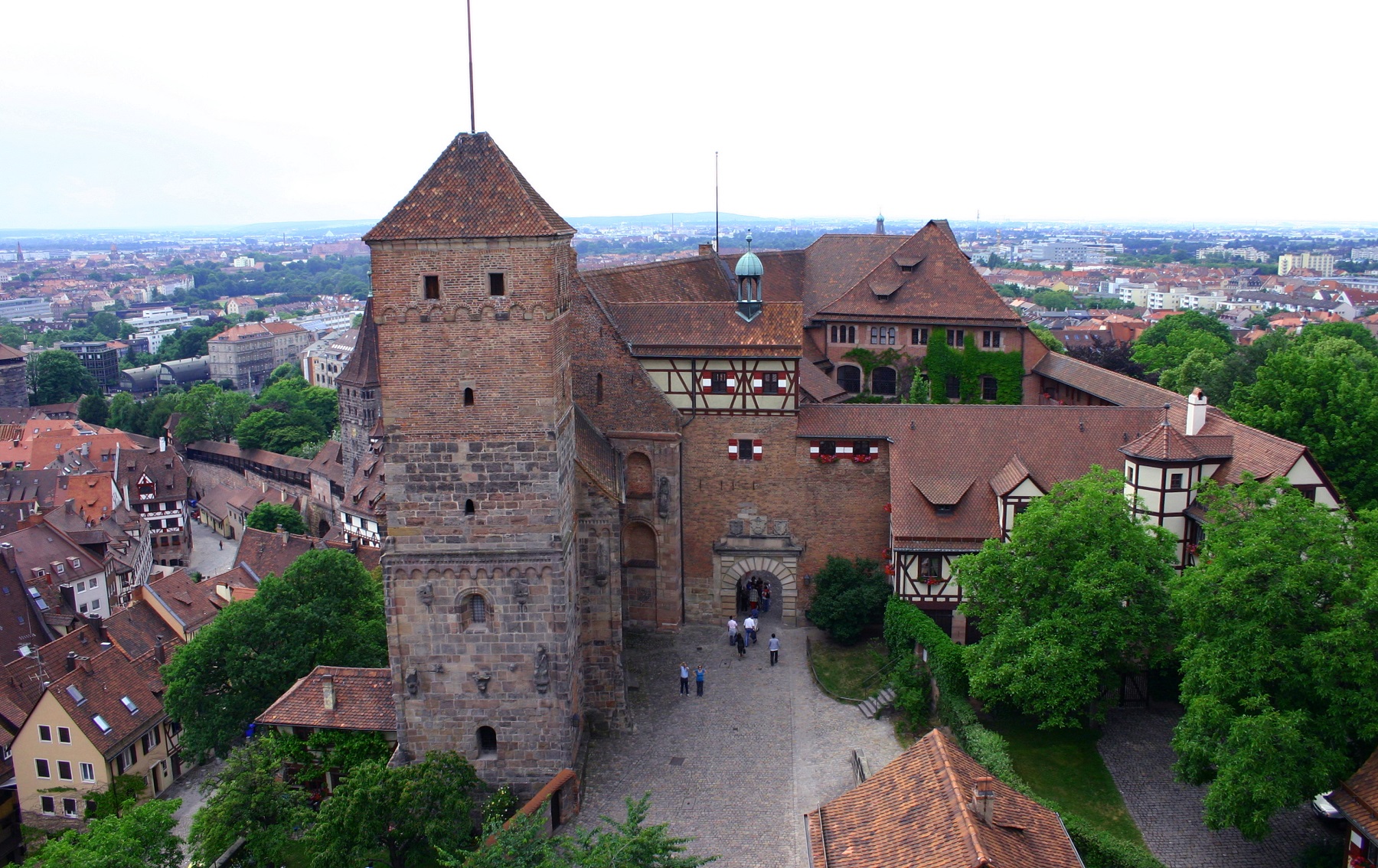
The castle complex Kaiserburg is one of Nuremberg’s landmarks, and it is one of the most visited places in the city. The complex is located on top of a sandstone cliff above the rest of the city, and it consists of three parts; the imperial castle Kaiserburg, various noble buildings, Burggrafenburg, and the other buildings to the east, städtische Burganlage.
It is believed that the castle dates from the 11th century and that it became an imperial residence in the German-Roman Empire in 1050; a status which, until 1571, meant that the emperor always held his first meeting of the Reichstag here at the castle. After this, the tradition was broken, but the city also received visits from the emperor later.
The Kaiserburg facility itself was founded in 1140, when King Konrad III established it as a royal support point on travels in the kingdom. Up until the 15th century, it was expanded, first by the burgraves, who were subject to the empire, and later by the city of Nuremberg, which had taken over the site.
In the 19th century, a restoration of the complex began, and in the 1930s the castle’s stables were set up as a youth hostel. It came to house special guests during the party days of the NSDAP, which were held in the city; among others, Reich Youth Leader Baldur von Schirach lived here. During World War II, the castle was heavily damaged and subsequently rebuilt.
From the castle’s large terrace below Sinwell-Tårn/Sinwellturm, there is a very beautiful view over the historic district, and immediately to the east of this are the old stable buildings. If you go from here to the north side of the castle, you will find the Borghaven, Burggarten, which was built north and west of the castle on the old bastions.
At the top of the Kaiserburg sits the Sinwellturm, which, as the only one in the city, was built as a round tower from the start. On the one hand, it is still a fantastic lookout tower in our days, and on the other hand it could function as protection in the event of an attack. Previously, a staircase led up to an opening that could not be entered from street level. You can still see a remnant of this entrance in the masonry.
An essential prerequisite for the maintenance of city life was the supply of fresh drinking water. In a small, normal-looking building, the 47 meter deep well, Tiefer Brunnen, hides itself. The well is dug down to the water, which is three meters deep here. At first, the water was raised by hand and buckets, while later wheels were added, which could pull up 200 liters of water per hour, which was a lot at the time. There was an employee to look after the water and the plant, and his role was so important that he was not allowed to leave Nuremberg.
In the castle you can visit the Kaiserburg Museum, which opened in 1999; it is part of the city’s large cultural history museum, the Germanisches Nationalmuseum. The museum’s most important exhibition is about the castle’s history and political importance over time. It is illustrated with some castle models from the foundation to around the 14th century. You can also see special exhibitions on, among other things, the development of historical weapons and riding techniques through the Middle Ages.
Nuremberg’s town hall is an impressive sight. In particular, the western facade towards the Sebaldus Church is beautifully built in palace style. Right into the 14th century, the town had no town hall, but here an initiative was taken to build an administrative building and meeting hall. The oldest part of the complex was erected in the years 1332-1340; it is the medieval building that lies to the south facing the square Rathausplatz.
Over the following centuries, the town hall was expanded, but it took until the beginning of the 17th century before the building took on its current appearance. It was here, in the period 1616-1622, that the large building to the west was built in Italian palace style.
The most important room in the town hall is Den Historiske Rådhussaal, Historischer Rathaussaal, which was furnished in the years 1332-1340. With 40×12 metres, it was a mighty hall, and it was elegantly decorated over time by, among others, Albrecht Dürer. The hall burned down in 1945 and was later rebuilt in a much simpler design, which nevertheless gives an impression of ancient splendor.
From the vestibule opposite the Sebaldus Church, you can enter a small room that exhibits copies of the regalia, the Reichskleinodien, which King Sigismund handed over to the city of Nuremberg in 1427 as a perpetual possession. The originals were moved to Vienna in 1796 for fear that they would come into Napoleon’s possession. They did not return to Nuremberg until 1938, but the United States moved them again to Vienna after World War II.
You can also visit the medieval dungeons/Mittelalterliche Lochgefängnisse, which is located under the town hall. The place is dungeons in the most literal sense of the word, as they are cells arranged as a kind of detention, where prisoners could be put down when confessions had to be forced.
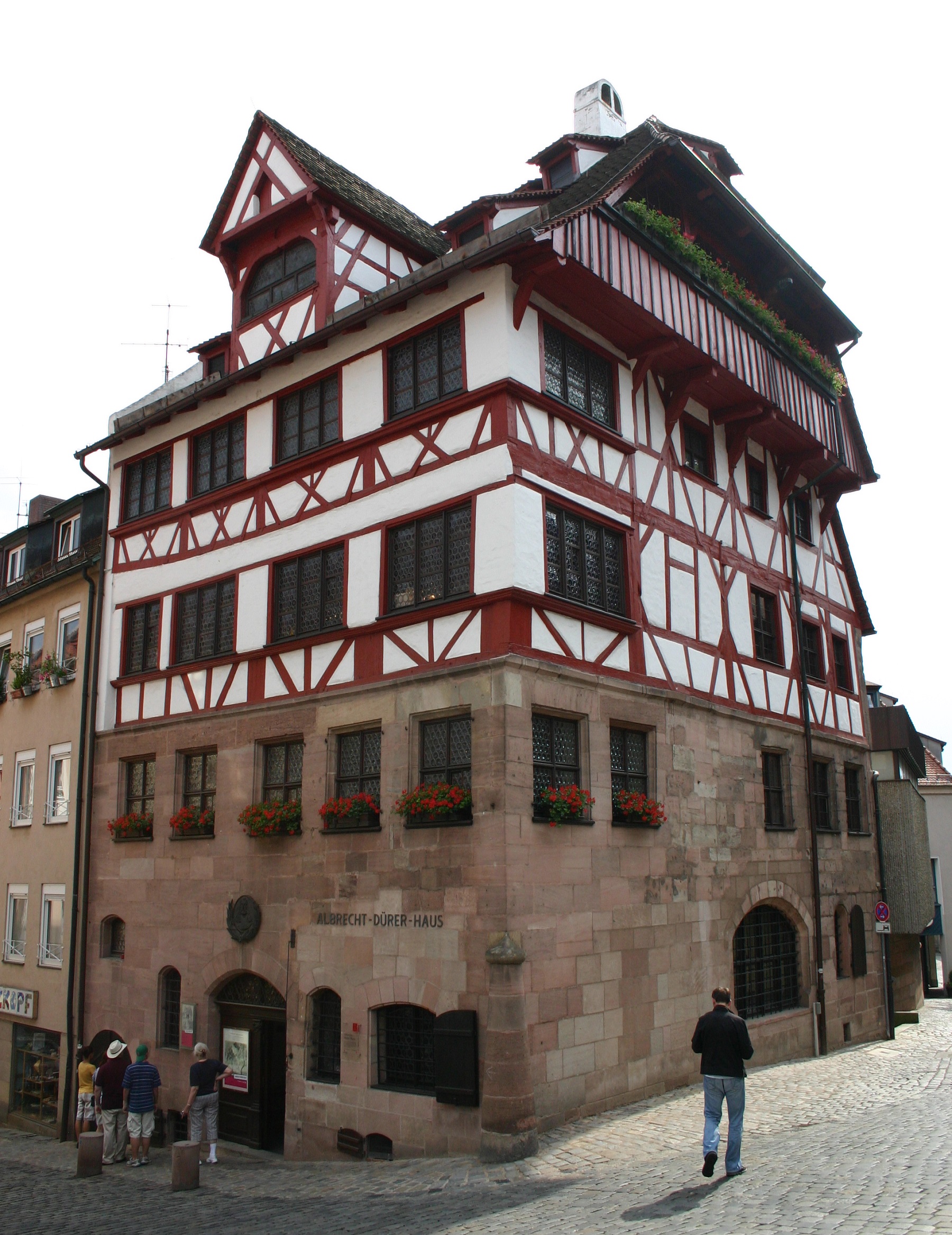
This beautiful historic building was the residence and workplace of the artist Albrecht Dürer from 1509 until his death in 1528. The four-storey house was built in the latter half of the 15th century, and since 1871 it has been used as a museum.
You can partly see the interior of the house itself, various works of art, and of course there is also information about Albrecht Dürer. The drawings and paintings shown are not originals, but can be seen at the city’s Germanisches Nationalmuseum. Dürer’s most famous work, The Four Apostles/Vier Apostel, hangs in the Alte Pinakothek in Munich.
The German Nazi Party held party days, national meetings, ten times in the years 1923-1938. In 1923 in Munich, 1926 in Weimar and 1927, 1929 and annually 1933-1938 in Nuremberg. From 1933, when Nazi Party leader Adolf Hitler had become chancellor, the meetings gradually became colossally large and held as impressive spectacles.
For the event, the entire area was thought to be developed with even very large buildings, some of which were built, others not. The area and the national meetings also became backdrops for several of director Leni Riefenstahl’s films for the Nazi regime.
In addition to the places you can see today, there was also a kind of holiday and entertainment town, KdF-Stadt, which was part of the recreation program Kraft durch Freude. There were large wooden buildings here which were supposed to be the more entertaining aspect of the NSDAP national meetings. The buildings, which have now disappeared, were built as part of the facility at the 1936 Berlin Olympic Games and subsequently moved to Nuremberg.
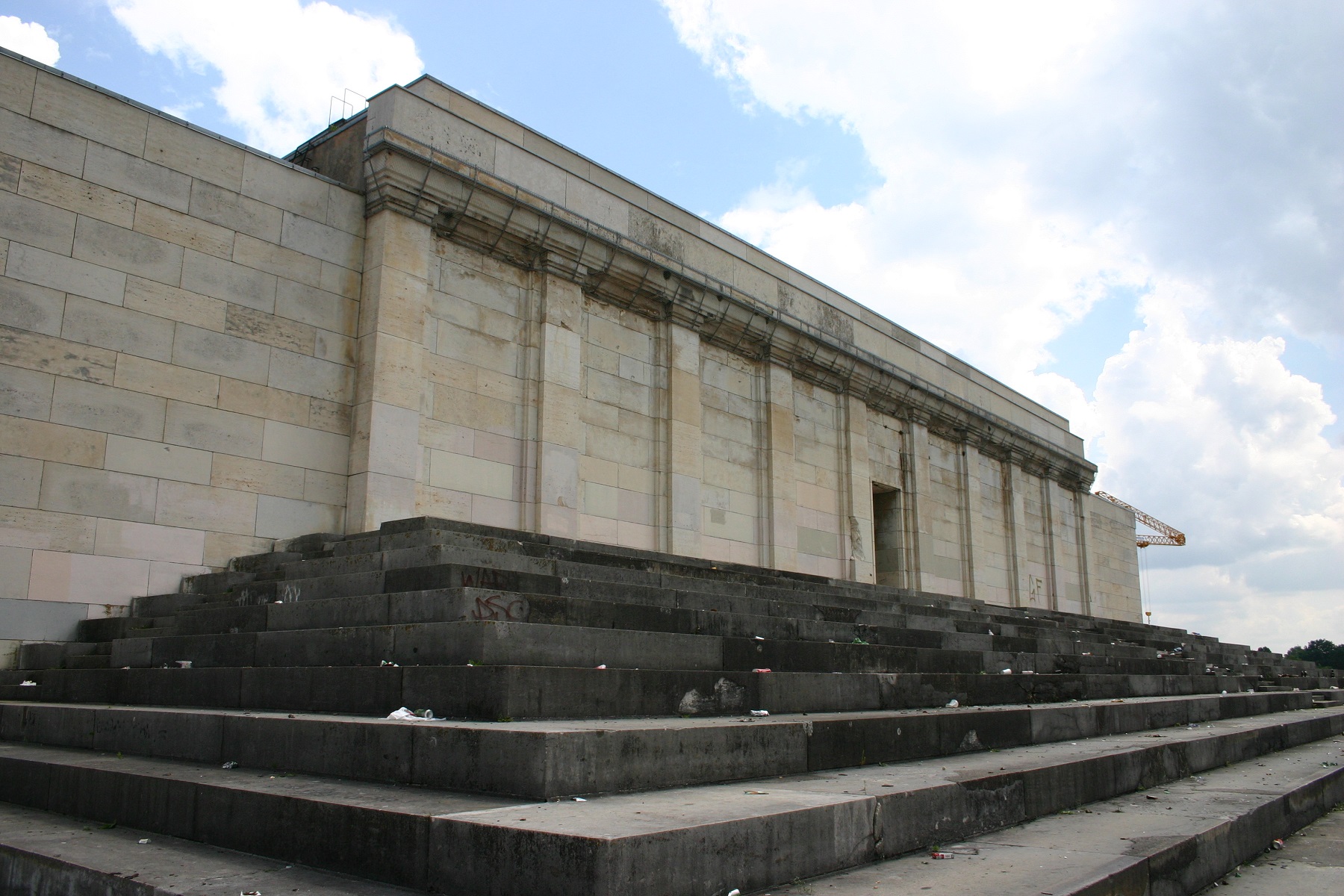
The large area Zeppelinfeld was the scene of the large mass processions at the NSDAP’s national meetings. The 362×378 meter venue was arranged according to Albert Speer’s drawings in the years 1935-1937 with a large marching area and the grandstand, Zeppelintribüne.
There was room for 150,000 people, of which 70,000 were spectators in the stands. The Zeppelin tribüne is the primary backdrop; it is 360 meters wide and 20 meters high. The inspiration is taken from the ancient Pergamon altar, which can be seen at the Pergamon Museum in Berlin. After the end of the Second World War, the upper row of columns was blown away, it had been built across the entire width of the tribune.
In the center of the tribune is a raised position where the most distinguished guests sat, and jutting out towards the large space in front of the tribune is a lectern. From here, Adolf Hitler spoke to the masses during the national meetings. Under the main grandstand is Den Gyldne Sal, Goldener Saal, which got its name from the installed mosaics. The hall has eight-metre ceilings and is 300 square metres; it provides stair access to the spectator stands at the top.
In 1937, Zeppelinfeld was also the stage for Albert Speer’s so-called Cathedral of Light/Lichtdom, which consisted of 152 spotlights that turned towards the sky to give the illusion of colossal building walls.
Today, the area is used for various purposes; among other things, concerts are organized here. In the area, you can see that large parts of the facility are intact.
In this documentation center you get information about the entire area that collectively forms the Reichparteitagsgelände. The center opened in 2001 and is located in part of the north wing of the Kongresshalle.
In the centre, which also gives a very detailed picture of and history of Adolf Hitler and the German Nazi Party’s path to government power in Germany. There are thorough descriptions and many films, images and effects to see.
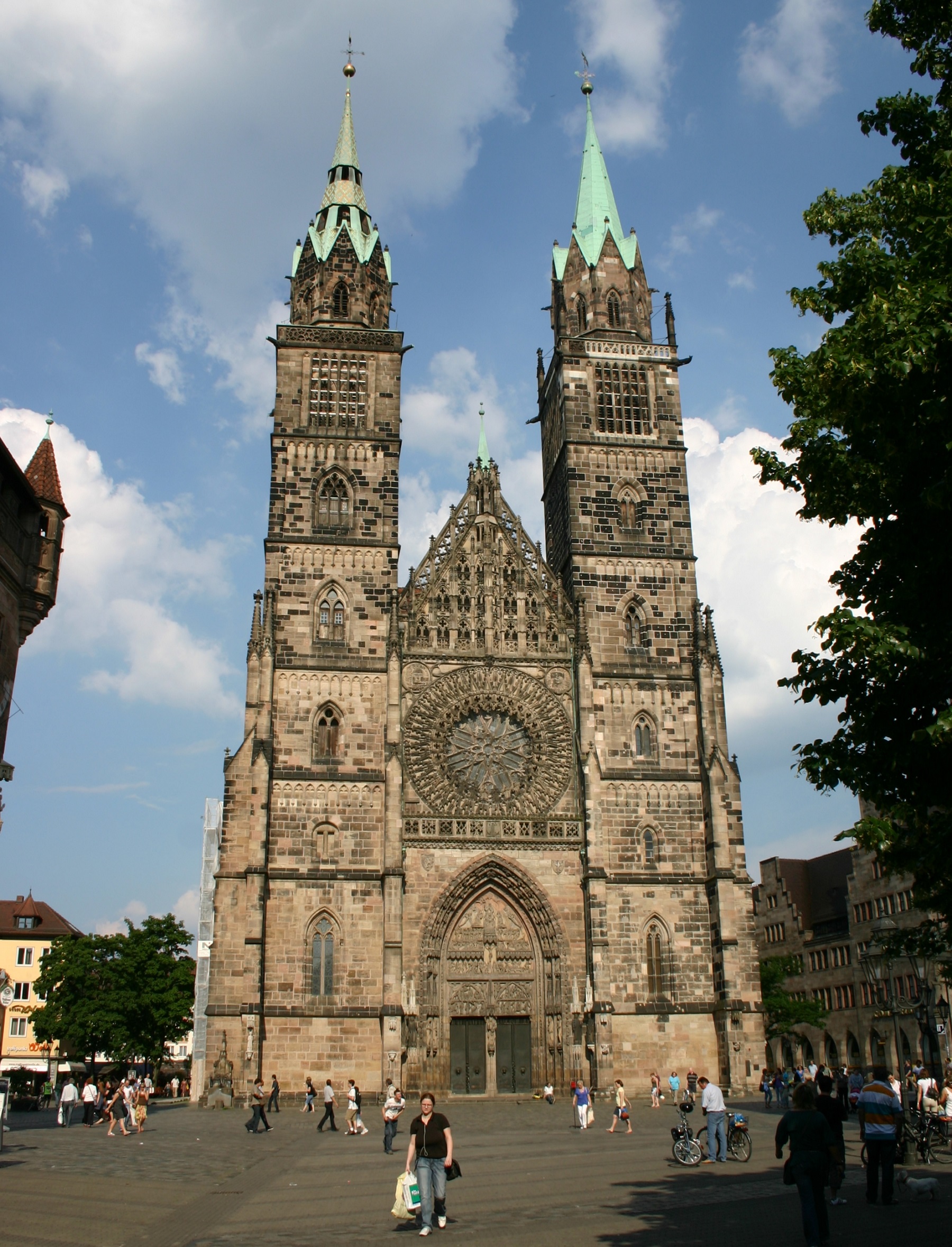
The Lorenz Church is the largest and most important church building in Nuremberg. The current church was built over three times from around 1260 to around 1500. The early style is High Gothic, and the western facade with the two skyward towers and the large rose window is very impressive. In 1439-1477 the large hall choir was built, here the style is Late Gothic.
In the church, you are met by a classic Gothic church room with preserved stained glass, a rose window, sculptures and other works of art. Above the aisle hangs Veit Stoß’s impressive cross, Engelsgruß, which was created in 1517.
In contrast to the slightly dark nave is the large, bright choir building, which reaches full height in all three naves of the church. In the choir you can see some of the impressive stained glass windows.
The Sebald Church is one of Nuremberg’s great churches from the Middle Ages. The first church was built from around 1230 and was named after the town’s patron saint, Saint Sebaldus, who was a missionary in the 11th century.
As a special sight, you can still see relics on display in this Protestant church. They are from Sankt Sebaldus and therefore play an important role for the whole city. The relics lie centrally in his own artistically designed gravestone.
The church in its original design was completed in 1275. The style was originally a Romanesque basilica, but already with the first extension with side chapels in 1309-1345, the style was different. In the years 1358-1379, the large Gothic altar hall was added, and it, together with the towers, is the most striking part of the building. In the 15th century, the towers got their current appearance.
Next to the church you can see the associated parish farm, Sebalder Pfarrhof. It was mainly built 1361-1379, where it had previously burned down. It was expanded in 1514-1515.
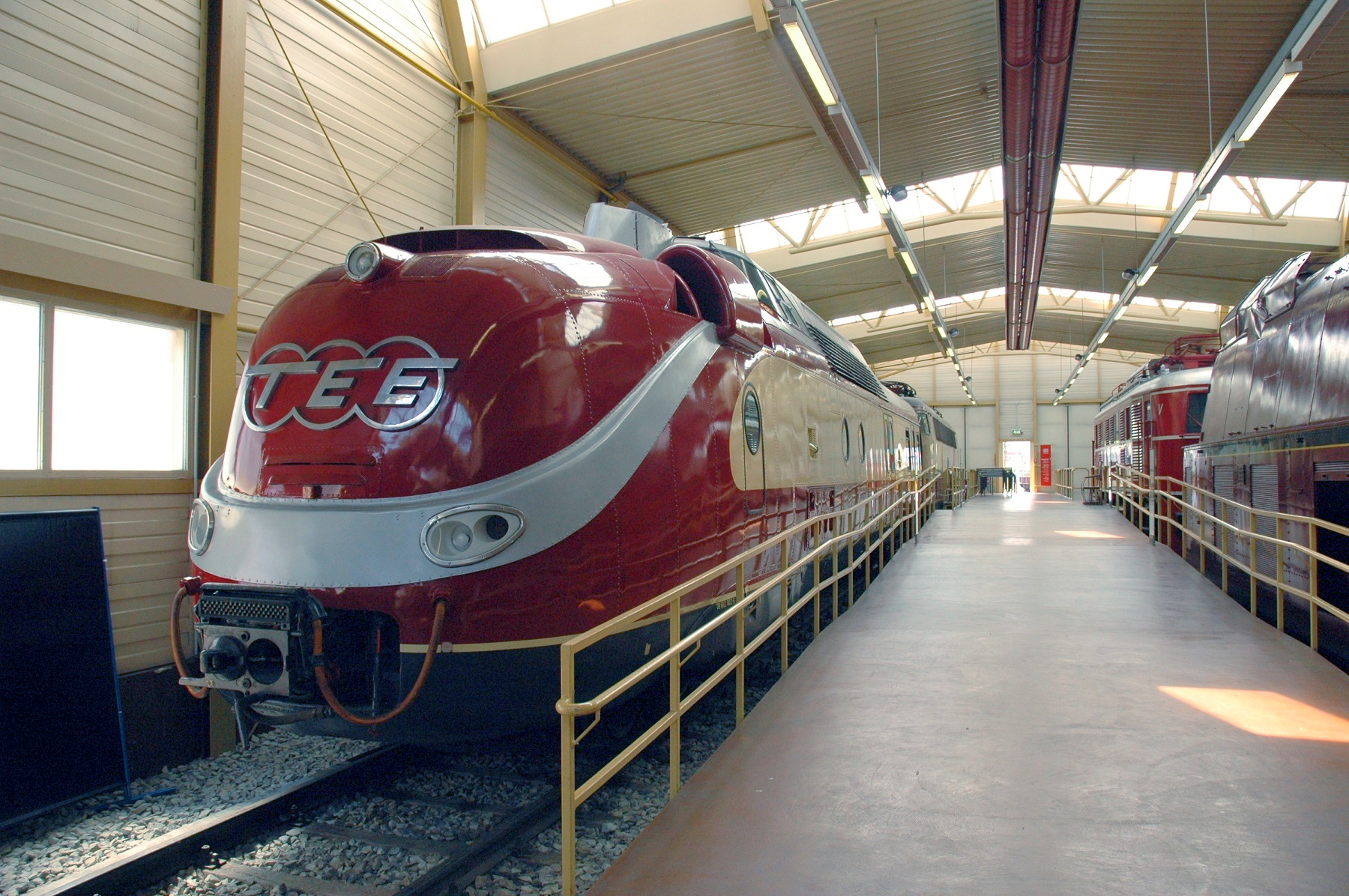
The DB Museum can be considered Germany’s national railway museum. Here the country’s railway history is described, and of course there are a number of beautiful locomotives and wagons on display; among other things, a reconstruction of the locomotive Adler, which was the first to run on the country’s first railway between Nuremberg and Fürth. Here are also famous locomotives from the 1930s and elegant stock from the TEE trains; Trans Europe Express.
The museum’s roots go back to 1899, when the Royal Bavarian Railway Museum, Königlich-Bayerisches Eisenbahnmuseum, was opened. The museum’s main building was built in 1925, and it contains a distinguished description of various parts of German railway history, both in the time as the DRG (Deutsche Reichsbahn-Gesellschaft), the GDR’s DR (Deutsche Reichsbahn), West Germany’s DB (Deutsche Bundesbahn) to the current German state railways DB (Deutsche Bahn).
The story is followed from the time with the small railway contractors to the assembly of the tracks. Equipment, technology and comfort are some of the things you can look at in more detail, and then there is a large activity area for children of all ages with a locomotive simulator, model railway and build-it-yourself railways.
The Museumsbrücke bridge is one of the central ones in Nuremberg’s old town, the Altstadt. The biggest attraction at the bridge is the beautiful view from here over the Pegnitz River and the atmospheric buildings that surround it here in the heart of the city.
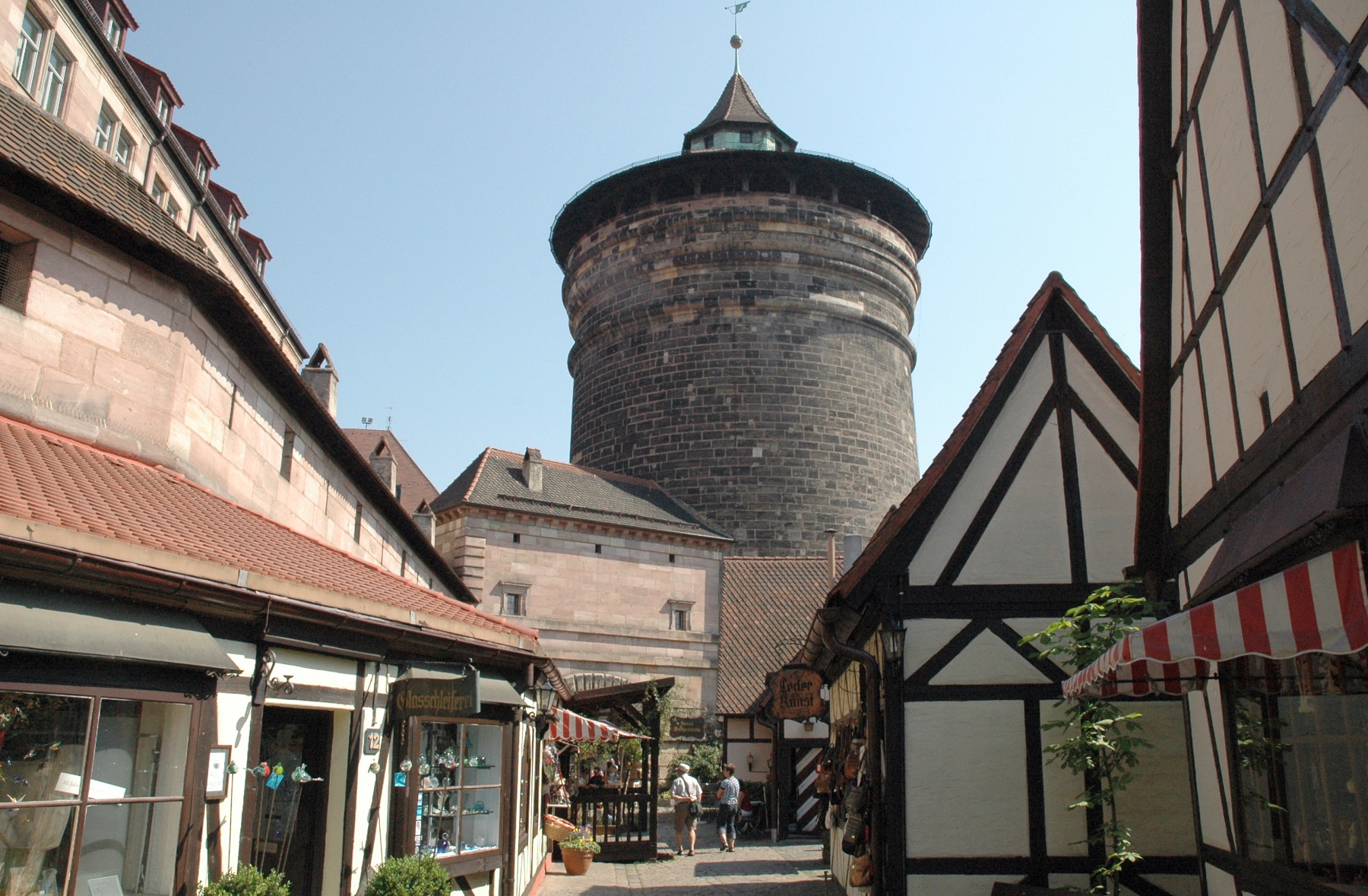
The Königstor city gate was one of Nuremberg’s historic grand entrances. Through Königstor came people and goods from, among other things, Regensburg. Here is one of the city’s large defense towers, the Königstor Turm, which is part of the city’s old fortifications, which stretched all the way around the city’s former extent. Königstor Turm was originally square, but like the others was rounded to better withstand attacks.
Ludwigstor is one of the historic city gates that provided access to and from Nuremberg. At the gate there are fortifications; most characteristic is the round defense tower, which was built into the city wall in its time. The tower dates from 1377 and originally had a square shape. In 1558, the tower was made round to better withstand attacks with cannonballs.
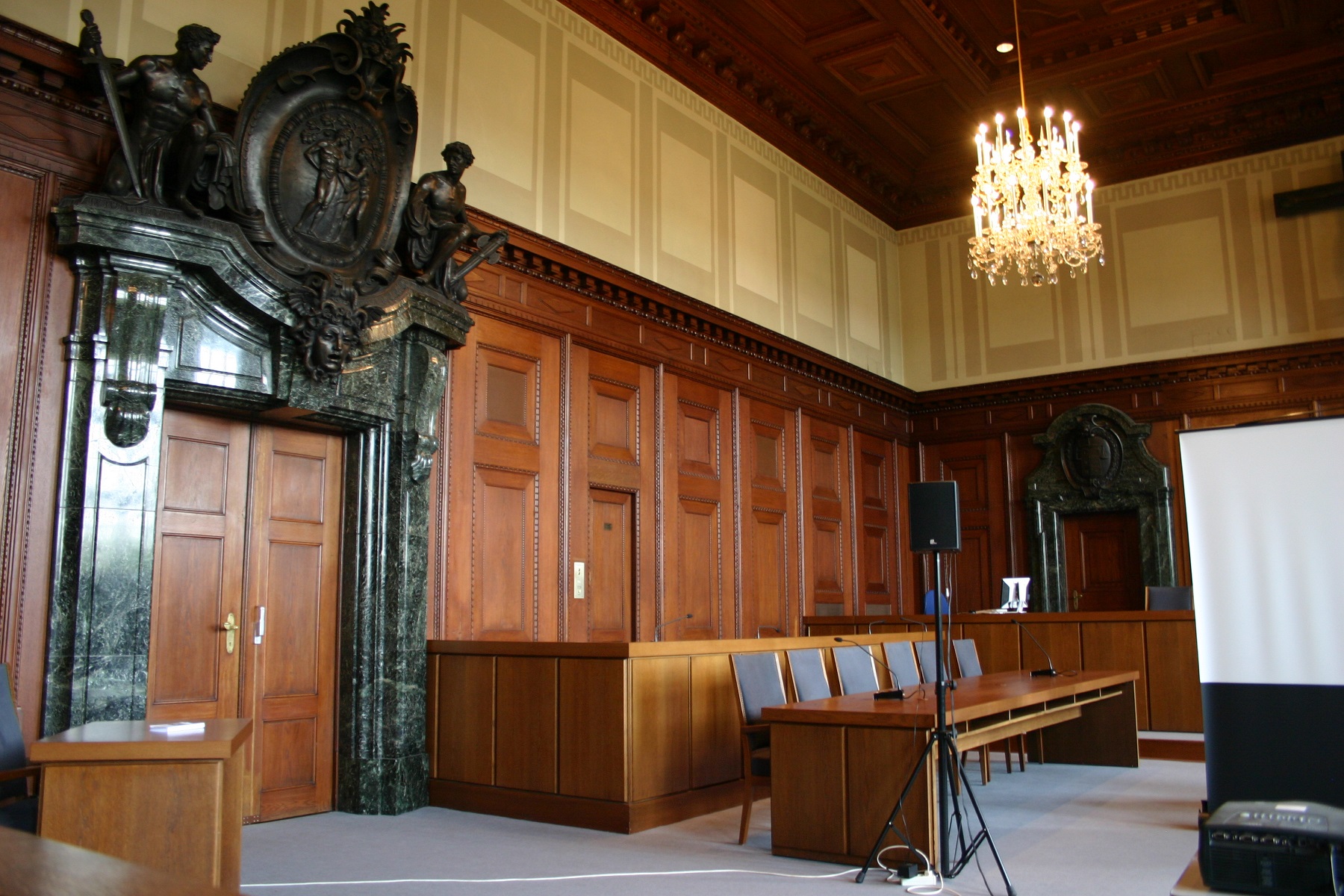
The Nuremberg trial was held in Nuremberg’s Palace of Justice. The trial was the trial of high-ranking politicians and others from Nazi Germany.
Schwurgerichtssaal 600 is the room where the trials were conducted from 20 November 1945. The primary and best known trial was conducted against a total of 22 people; among others Hermann Göring and Rudolf Hess. The sentences were handed down on 1 October 1946.
The choice of this particular location was due to the fact that the courthouse and the nearby prison were partly intact and partly large enough to accommodate the voluminous cases. Nuremberg was also in the American zone of Germany, which also played a role.
Since 1946, the interior has been replaced, but for example the wall panels are easily recognizable from pictures from the Nuremberg Trials. However, new furniture has been installed, which to some extent illustrates the time from the process. The hall is still in use as a courtroom.
This place is dungeons in the most literal sense of the word. During the construction of the town hall in the Middle Ages, a kind of detention was set up with a number of cells where prisoners could be put down when confessions had to be forced. There are several cells where the prisoners could be subjected to a little bit of everything in terms of torture. Once you got down here, you were tortured until you had confessed three times.
If the content of the confession was meted out to the death penalty, then the last meal was taken in the dungeon, while the actual execution took place in the square outside. Another punishment could be expulsion from the city, but on that occasion one was branded in several places so that everyone else could see that the person was undesirable.
There are guided tours through the dungeons, and here you get a refined description of life in the cells; among other things, the many forms of torture that took place. The instruments are also on display here. The dungeon closed in 1808.
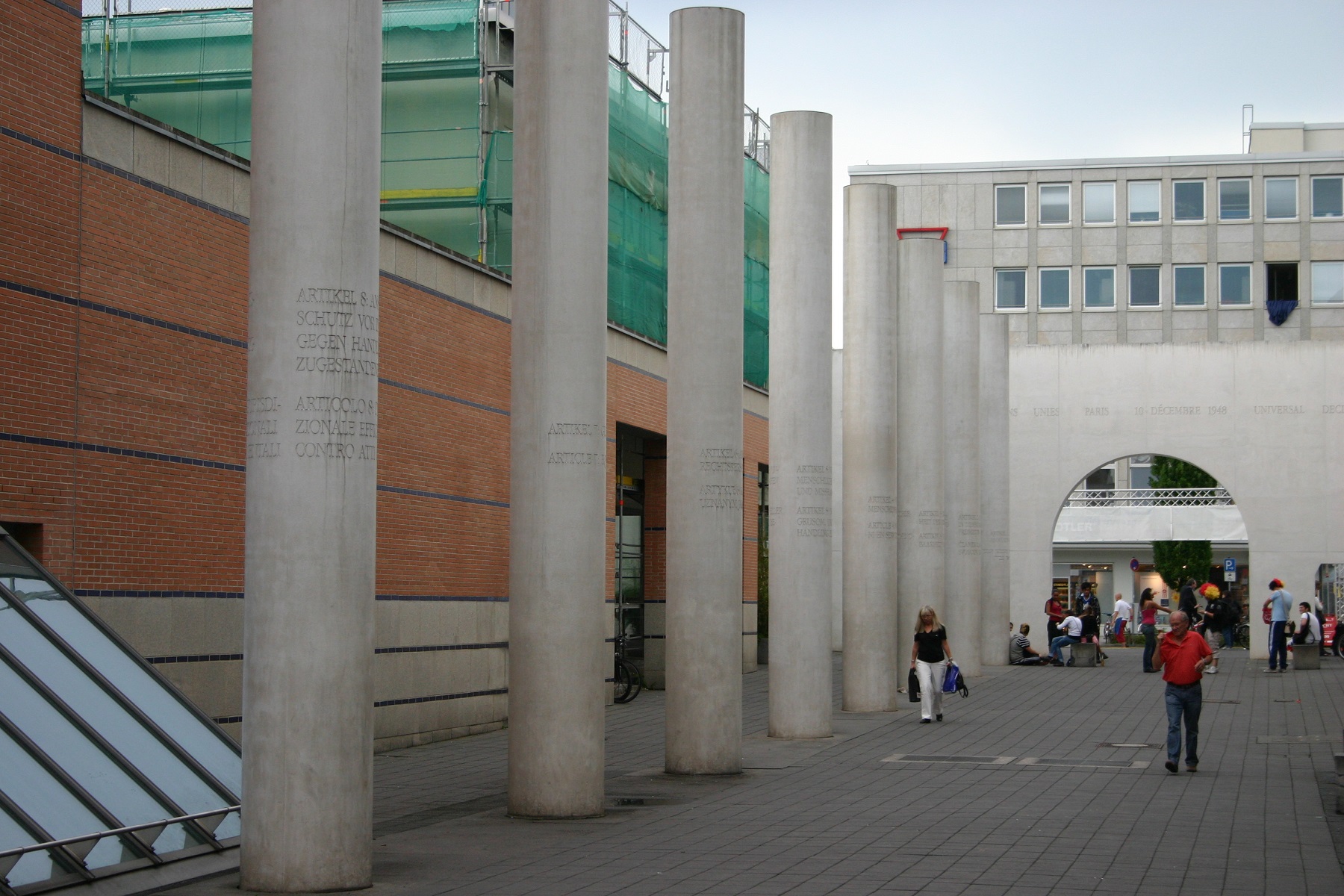
At this national museum, culture and art in the German-speaking area are depicted from prehistoric times to the present day. The museum was founded in 1852 and is Germany’s largest cultural history museum; and it covers the entire historical, German-speaking area.
The site is based on Baron Hans von und zu Aufseß’s so-called General Repertory from 1852. In 1857, the museum was set up in the former monastery buildings, which still form part of the complex. The monastery was founded in 1380, and the foundation stone laid the following year.
The collections are extremely extensive and span, among other things, folk art, paintings, musical instruments, furniture, coins, sculptures and scientific remedies. There is almost nothing that is not represented here.
Among the many highlights are some original works by Albrecht Dürer, such as Michael Wolgemut and the Emperor Portraits, and Ernst Ludwig Kirchner’s Der Trinker from 1914, which is considered a masterpiece of expressionism.
Neutor is one of the great entrances to the city through the medieval walls. Next to the city gate itself lies the now round defense tower, which was originally square like the other city towers at the time.
Just inside the gate, you can visit the pretty and peaceful Bürgermeistergarten, which was built on top of the old fortifications.
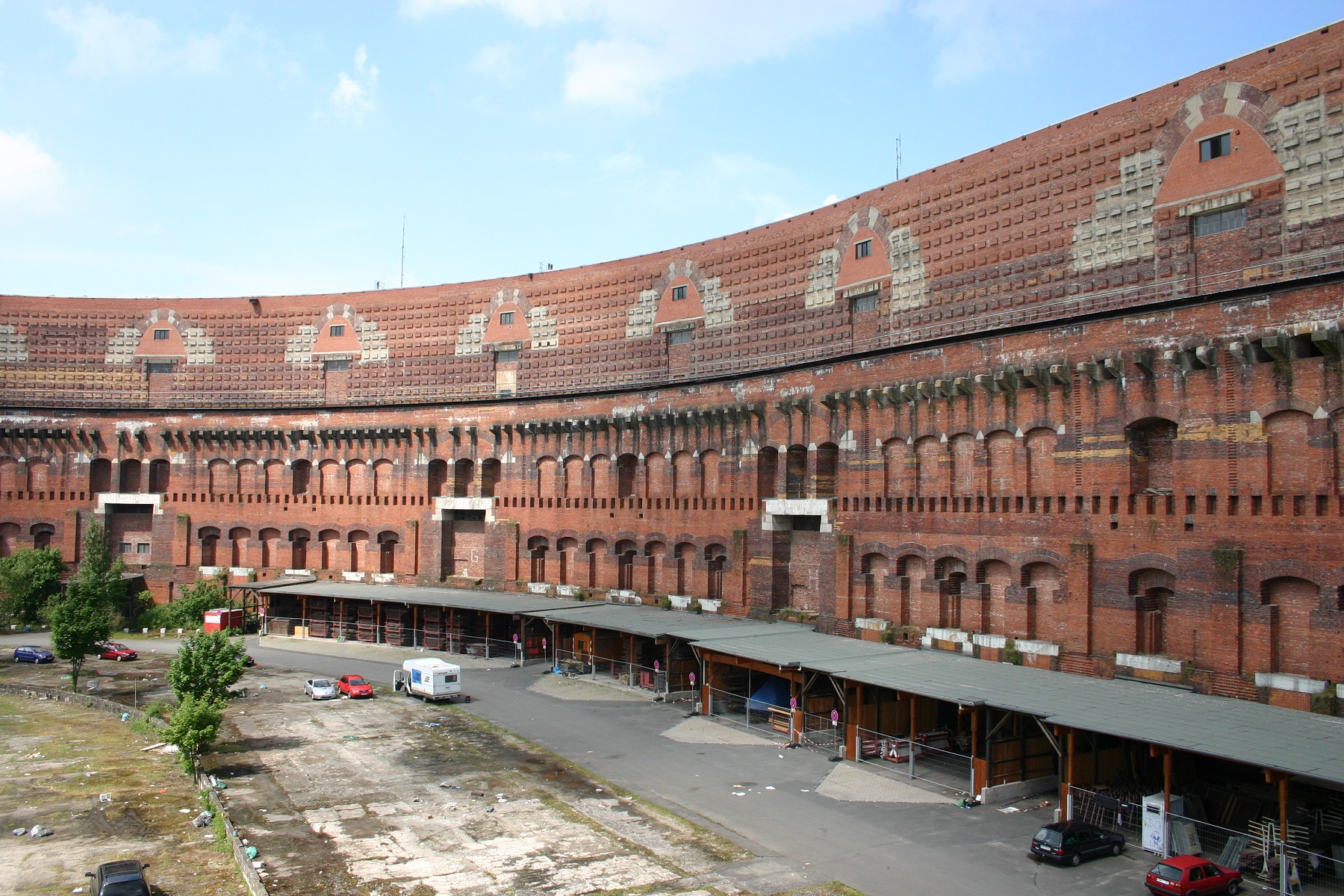
Kongresshalle is the largest preserved building from the Nazi era. The large building was built as a congress hall for the Nazi party, NSDAP, and it was supposed to be able to seat 50,000 people.
The congress hall has a diameter of 250 metres. The height is 39 metres, but several floors were planned so that it should have reached 70 metres. The foundation stone was laid in 1935, but the building was never finished, among other things, the great hall was never roofed.
In the past, the city’s zoo was located here, and there were various buildings, such as a decorative lighthouse. As part of the tour of the Documentation Center for the Reichspartidag area, you come out onto a platform that stretches high above the ground in the middle of the unfinished hall; it’s an exciting sight.
The Historic Art Bunker is a bunker that was used to store Nuremberg’s most important art treasures during World War II. Here in the medieval cellar, carved into the bedrock, the treasures were well protected from destruction. The bunker is 900 square meters and it is built 24 meters into the rock.
The idea of using the old beer cellars for the new purpose came from three high-ranking officials, who got the city’s mayor on board with the plan. In 1940 work started as the first site in Germany and the facility was built to maintain a constant temperature of 18 degrees to protect the works.
The first thing that was brought here was Veit Stoß’s Engelsgruß from 1517, which can now be seen as before in the Lorenzkirche. Among other works were casts of Schöner Brunnen’s figures as well as the regalia that King Sigismund gave to the city in 1427.
The regalia had been brought to the city from Vienna in 1938, and for fear that they would fall into the hands of the Americans, in 1945 they were carried in an ordinary rucksack to one of the city’s other cellars to be walled up there. After a few months of searching, the Americans found them and they sent them to Vienna. Incidentally, the room where the regalia and other of the most valuable works were kept was partly built from materials from the unfinished congress hall at the Reichsparteitagsgelände.
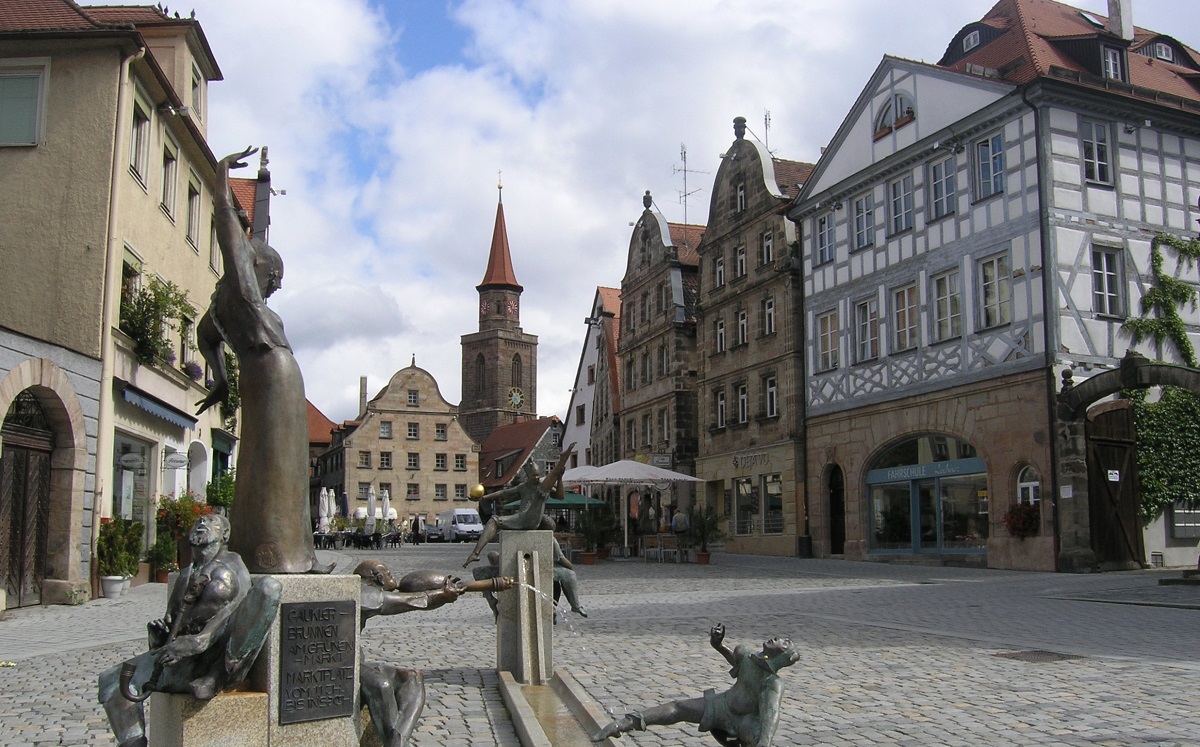
The city of Fürth is an independent city with a good 1,000-year history; however, it has almost merged with Nuremberg today and is also quickly reached by subway. Fürth started as a fortification, but quickly developed into a market town, which, however, came to stand in the shadow of its neighbor Nuremberg, which was the fastest to obtain privileges that could create growth.
Precisely Nuremberg and Fürth became historic in 1835, when the first German railway was just built between these two cities. There are many preserved old buildings in Fürth, and the historical environment of the streetscape is one of the attractions of the city.
Among the buildings is Fürth’s distinctive town hall, Fürther Rathaus (Königstraße), which stands as the city’s landmark. The town hall was built 1840-1850 by Friedrich Bürklein. The inspiration from the Palazzo Vecchio in Florence is very clear. The city is also home to Fürth Kunstgalleri/Kunst Galerie Fürth (Königsplatz 1), which is a public museum where changing exhibitions of various contemporary art are arranged.
You can also take a closer look at Fürth’s churches with St. Michael’s Church/Kirche St. Michael (Kirchenplatz) as the most interesting. The church is believed to have been built around the year 1100 in its original form. Over time, however, it has changed many times. The church room itself is very atmospheric, and is in the style of changes in the 1800s.
The town of Ansbach was founded in the middle of the 7th century and therefore has a long history behind it. In the 14th century, the town became connected with the Hohenzollern in Brandenburg, and that was the start of Ansbach’s status as a residence town.
In the old town you will find several churches, not least St.-Gumbertus-Kirche (Johann-Sebastian-Bach-Platz) and St.-Johannis-Kirche (Martin-Luther-Platz) are interesting. The city gate and tower Herrieder Torturm (Maximilianstraße) from the 18th century is also one of the city’s well-known structures.
The biggest attraction, however, is the residence castle of the Margraves of Brandenburg-Ansbach, Ansbacher Markgrafenresidenz (Promenade/Schloßplatz). The current interior of the castle was mainly created in the 18th century, and today a large porcelain and faience collection is exhibited here, and various furnishings and paintings can also be seen. Just east of the castle is the castle garden (Promenade), which is a magnificent facility. In the garden is the place’s almost castle-like orangery.
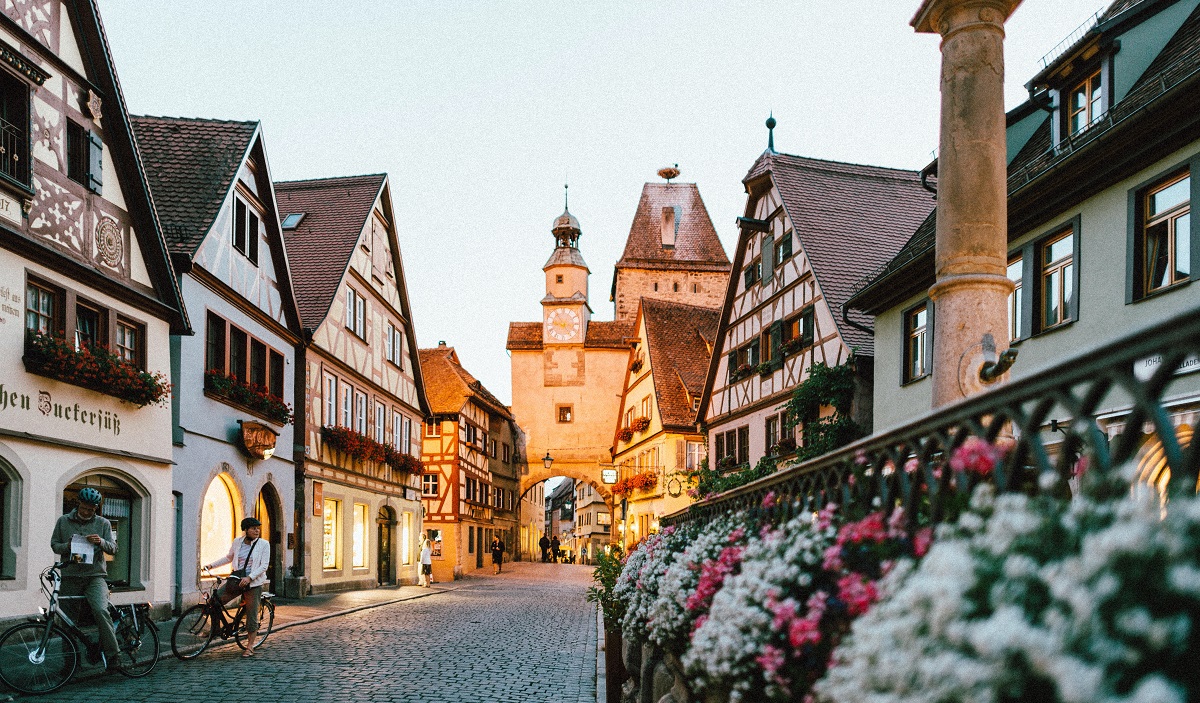
Raised above the Tauber River lies the town of Rothenburg, a gem of medieval architecture and good atmosphere. The old town is a tangle of narrow alleys and cozy squares, and everywhere there are well-preserved houses from the city’s long history. For many visitors, the city is the archetype of a German city with large church buildings, half-timbered houses, fortress walls, a richly decorated town hall and the like.
Bamberg is one of the best-preserved, must-see cities in Bavaria. The town was first mentioned in the year 902, and it gradually grew up around a castle. Bamberg has largely preserved its medieval town core intact, and although there are many fine buildings, there are of course some sights that are particularly interesting.
The cathedral, Bamberger Dom (Domplatz), was first built 1004-1012, but after a fire in 1081 it was extended. It reached its current appearance in the 13th century. The church is 94 meters long, and the four towers reach a height of 81 meters. The cathedral is one of the German imperial cathedrals, where there is an imperial tomb (Heinrich II). At the cathedral you can see one of the city’s landmarks, the Bamberg rider/Bamberger Reiter, which dates from around 1200.
On the cathedral square you can also see the imposing residence building, Neue Residenz, which was built in the 1600s and 1700s. From 1803 it also became a royal residence. Another of the most significant buildings is the Old Town Hall, Altes Rathaus (Obere Brücke), which was first inaugurated in 1387.
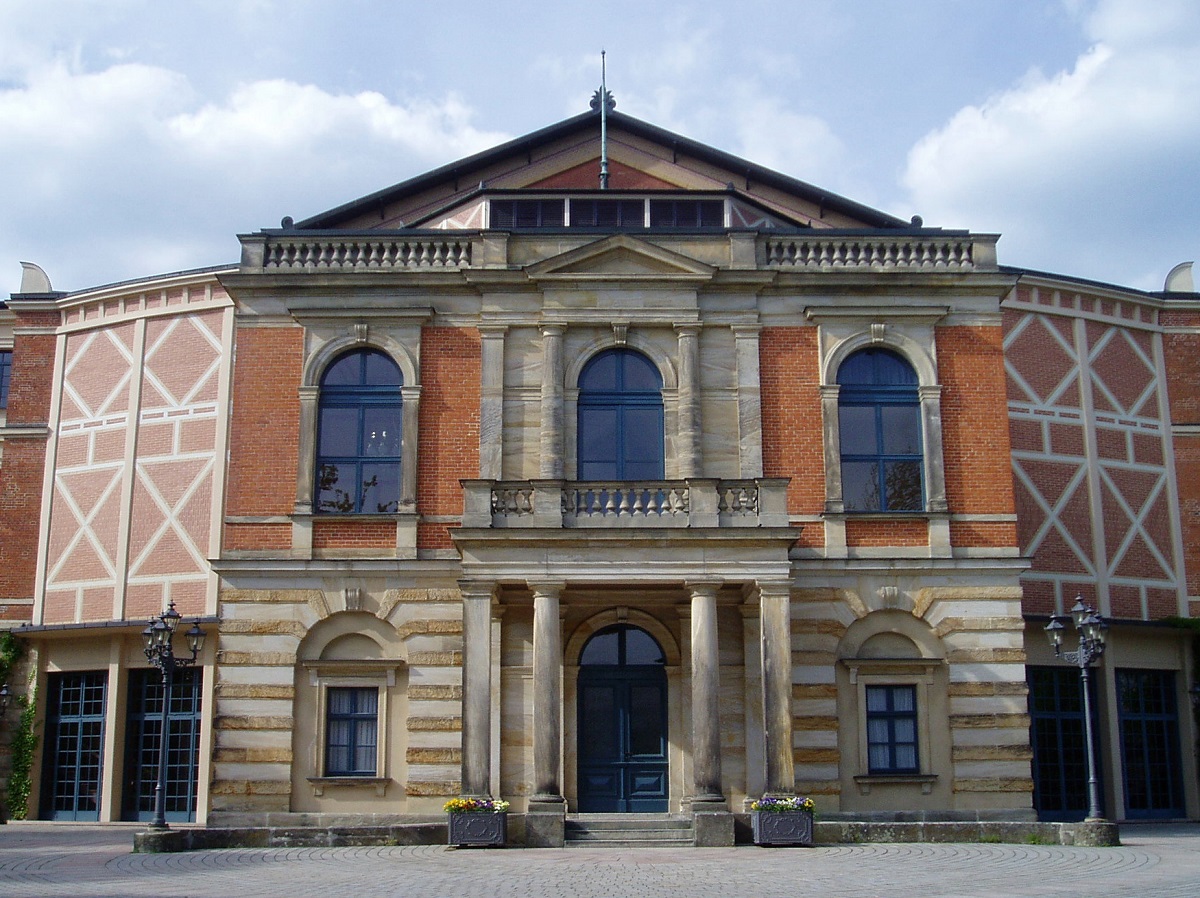
The city of Bayreuth is world-renowned as the home of the so-called Wagner festival plays. The festival is a performance of a number of Richard Wagner’s operas, and the reason for this is that the composer himself chose Bayreuth as the place to perform his works.
The festival opened in 1876 under the direction of Richard Wagner. The well-known architect Gottfried Semper, who, among other things, is behind the Semperoper in Dresden, designed an opera house for the purpose, the Bayreuther Festspielhaus (Siegfried-Wagner-Allee), and it became the center of the performances.
The festival is held every summer, and Wagner’s great operas are performed here: Der fliegende Holländer, Tannhäuser, Lohengrin, Der Ring des Nibelungen (Das Rheingold, Die Walküre, Siegfried, Götterdämmerung), Tristan und Isolde, Die Meistersinger von Nürnberg and Parsifal.

Regensburg is located in the state of Bavaria at the point where the river Regen flows into the larger Danube. The city’s history is rich and stretches back to the Romans, who built a fort on the river at this very spot, which marks the northernmost course of the Danube. Regensburg developed rapidly and became an important place on the trade routes of Europe when the Steinerne Brücke opened in the 12th century over the Danube.
The old medieval town of Regensburg is still quite well preserved, and it, together with the district of Stadtamhof, is on UNESCO’s list of world cultural heritage. The medieval town is the largest that has been preserved from its time north of the Alps, and it is a fantastic place to explore with small squares and narrow streets, all surrounded by old houses, churches, etc.
Breite Gasse 5
city-point-nuernberg.de
Glogauer Straße 30-38
franken-center-nuernberg.de
Königstraße 42
galeria-kaufhof.de
Königstraße 14
karstadt.de
Karolinenstraße, Breite Gasse, Kaiserstraße, Königstraße, around the main market
DB Museum
Lessingstraße 6
dbmuseum.de
Fürthermare
Scherbsgaben 15, Fürth
fuerthermare.de
Playmobil-FunPark
Brandstätterstraße 2-10, Zirndorf
playmobil-funpark.de
Tiergarten
Am Tiergarten 30
tiergarten.nuernberg.de
Nuremberg’s history stretches back to the time between 1000 and 1040, where the city is believed to be founded. The specific year is not known, but in 1050 Nuorenberc is mentioned for the first time in King Heinrich III’s so-called Sigena-Urkunde. The location was strategically important between Bavaria, Bohemia and the Franks, and it became the reason for the birth of such a successful city in the future.
From the beginning, the castle of Nuremberg was built; in the 1000’s in the original and smaller edition than the one seen today. Heinrich III put the work in motion and it became the beginning of the city’s status as a county where the bailiffs resided.
The year 1219 became landmark, with Emperor Friedrich II here giving Nuremberg the so-called Great Freedom Letter, Großer Freiheitsbrief, which made the city a free state city, Freie Reichsstadt. The new status greatly diminished the power of the bourgeoisie outside their own castle, and the culmination came in 1427, when Friedrich VI, as the last bailiff, sold his powers to the city-state. Then the city’s leadership lay in the hands of the city council; however, Nuremberg was subject to the German-Roman Empire, which, however, had a looser governance and structure than today’s society.
In the centuries around the 1300-1500s, Nuremberg grew strongly, and together with Cologne and Prague were the largest cities in the German-Roman Empire. In the empire there was no real capital, but Nuremberg was one of the cities that most times had imperial visits and stays; it was a symbol of its status and wealth. Wealth was significant, with the city having to hold the emperors’ residence, but with several extremely wealthy merchants at the forefront, the city could afford it. A mark of Nuremberg’s status occurred in 1423, when King Sigismund handed over the kingdom’s regalia, the so-called Reichskleinodien, from Karlstejn in Bohemia to Nuremberg. At Sigismund’s request, the regalia was to be in Nuremberg forever, which was not the case when the Habsburg emperors and later the United States moved them from Nuremberg to Vienna.
The Thirty Years War 1618-1648 came to play a major role for Nuremberg, with both the Swedish king Gustav Adolfs and the imperial army under Wallenstein’s command having large numbers of soldiers outside the city limits. The city’s citizens suffered, as the many troops were to have supplies that went from Nuremberg’s own consumption and trade opportunities.
At the beginning of the 19th century, Nuremberg was gradually heavily indebted and its status as a sanctuary was under threat. By agreement in 1803, the city remained independent, but already three years later, French troops during the Napoleonic Wars Nuremberg handed over to the Kingdom of Bavaria.
Throughout the 19th century, Nuremberg developed again rapidly, this time industrially. The city became Bavaria’s leading industrial city and the engine for the entire region. It was from here, too, that the first German railway could be opened; it was in 1835, and the track connected the cities of Nuremberg and Fürth. The population increased sharply during this period. In 1806 there lived 25,000, the 100,000 were rounded up in 1880, and in 1919 there lived 350,000 people.
Nuremberg became the center of the party’s colossal national rallies during the Nazi era. This was due to various reasons, not least that the city was centrally located in Germany and that there was a historical relevance to the heyday of the German-Roman Empire. Huge construction work was started, and in the Reichsparteistagsgelände area southeast of the center, the national assemblies took place with the participation of 100,000 people.
World War II went hard over Nuremberg. About 90% of the old city and 50% of the whole of Nuremberg were destroyed during bombing. However, the location with the height of the Imperial Castle became a rescue for many people and the city’s unique art and cultural treasure. The old brewery cellars were designed as both art bunkers and as escape routes from the city center and out under the city wall to the moat, from which there was easier access to get out of the city completely.
After the end of World War II, Nuremberg again became the center for a while. When the Allied victors were to begin the trial against the leaders of the Nazi party, Nuremberg was chosen as the site for the first trial. It was partly due to US pressure to hold it in the US occupation zone and partly to the fact that the city had a large justice palace with associated prison largely intact.
The decades after World War II were, of course, partly in the signs of reconstruction, but like other places in West Germany, considerable economic development occurred. Among other things, at the former Reichsparteitagsgelände, a new large trade fair and congress center was erected, while every year, too, tourism draws many visitors to the cozy town, which abounds with lovely squares and cozy nooks by the beautifully restored medieval buildings.
 Kaiserburg, Nuremberg[/caption]
Kaiserburg, Nuremberg[/caption]
Overview of Nuremberg
Nuremberg in the state of Bavaria is one of Germany’s great cities with a long and interesting history. At the same time, it is also a modern city with an extensive network of pedestrian streets, excellent museums and lovely cafes and restaurants, where you can of course taste the famous Nürnberger Bratwürste sausages.
The river Pegnitz runs through the old town and adds a lovely scenery to the cityscape and the many cozy streets in this district. Above the old city, the impressive imperial castle stands as a symbol of the emperor’s and the city’s high status in the Holy Roman Empire, and the history leaves its distinct mark to this day.
The city was strategically located on trade routes in Central Europe, and it brought great wealth to Nuremberg, where many beautiful town houses, churches, fortifications and other state-owned buildings were built in numbers during the Middle Ages. All these buildings were built in the center, and they can be seen to this day quite a few places in town.
About the Whitehorse travel guide
Contents: Tours in the city + tours in the surrounding area
Published: Released soon
Author: Stig Albeck
Publisher: Vamados.com
Language: English
About the travel guide
The Whitehorse travel guide gives you an overview of the sights and activities of the Canadian city. Read about top sights and other sights, and get a tour guide with tour suggestions and detailed descriptions of all the city’s most important churches, monuments, mansions, museums, etc.
Whitehorse is waiting for you, and at vamados.com you can also find cheap flights and great deals on hotels for your trip. You just select your travel dates and then you get flight and accommodation suggestions in and around the city.
Read more about Whitehorse and Canada
Canada Travel Guide: https://vamados.com/canada
City tourism: https://visitwhite-horse.ca
Main Page: https://www.vamados.com/
Buy the travel guide
Click the “Add to Cart” button to purchase the travel guide. After that you will come to the payment, where you enter the purchase and payment information. Upon payment of the travel guide, you will immediately receive a receipt with a link to download your purchase. You can download the travel guide immediately or use the download link in the email later.
Use the travel guide
When you buy the travel guide to Whitehorse you get the book online so you can have it on your phone, tablet or computer – and of course you can choose to print it. Use the maps and tour suggestions and you will have a good and content-rich journey.


The DB Museum can be considered Germany’s national railway museum. Here the country’s railway history is described, and of course there are a number of beautiful locomotives and wagons on display; among other things, a reconstruction of the locomotive Adler, which was the first to run on the country’s first railway between Nuremberg and Fürth. Here are also famous locomotives from the 1930s and elegant stock from the TEE trains; Trans Europe Express.
The museum’s roots go back to 1899, when the Royal Bavarian Railway Museum, Königlich-Bayerisches Eisenbahnmuseum, was opened. The museum’s main building was built in 1925, and it contains a distinguished description of various parts of German railway history, both in the time as the DRG (Deutsche Reichsbahn-Gesellschaft), the GDR’s DR (Deutsche Reichsbahn), West Germany’s DB (Deutsche Bundesbahn) to the current German state railways DB (Deutsche Bahn).
The story is followed from the time with the small railway contractors to the assembly of the tracks. Equipment, technology and comfort are some of the things you can look at in more detail, and then there is a large activity area for children of all ages with a locomotive simulator, model railway and build-it-yourself railways.
The Museumsbrücke bridge is one of the central ones in Nuremberg’s old town, the Altstadt. The biggest attraction at the bridge is the beautiful view from here over the Pegnitz River and the atmospheric buildings that surround it here in the heart of the city.

The Königstor city gate was one of Nuremberg’s historic grand entrances. Through Königstor came people and goods from, among other things, Regensburg. Here is one of the city’s large defense towers, the Königstor Turm, which is part of the city’s old fortifications, which stretched all the way around the city’s former extent. Königstor Turm was originally square, but like the others was rounded to better withstand attacks.
Ludwigstor is one of the historic city gates that provided access to and from Nuremberg. At the gate there are fortifications; most characteristic is the round defense tower, which was built into the city wall in its time. The tower dates from 1377 and originally had a square shape. In 1558, the tower was made round to better withstand attacks with cannonballs.

The Nuremberg trial was held in Nuremberg’s Palace of Justice. The trial was the trial of high-ranking politicians and others from Nazi Germany.
Schwurgerichtssaal 600 is the room where the trials were conducted from 20 November 1945. The primary and best known trial was conducted against a total of 22 people; among others Hermann Göring and Rudolf Hess. The sentences were handed down on 1 October 1946.
The choice of this particular location was due to the fact that the courthouse and the nearby prison were partly intact and partly large enough to accommodate the voluminous cases. Nuremberg was also in the American zone of Germany, which also played a role.
Since 1946, the interior has been replaced, but for example the wall panels are easily recognizable from pictures from the Nuremberg Trials. However, new furniture has been installed, which to some extent illustrates the time from the process. The hall is still in use as a courtroom.
This place is dungeons in the most literal sense of the word. During the construction of the town hall in the Middle Ages, a kind of detention was set up with a number of cells where prisoners could be put down when confessions had to be forced. There are several cells where the prisoners could be subjected to a little bit of everything in terms of torture. Once you got down here, you were tortured until you had confessed three times.
If the content of the confession was meted out to the death penalty, then the last meal was taken in the dungeon, while the actual execution took place in the square outside. Another punishment could be expulsion from the city, but on that occasion one was branded in several places so that everyone else could see that the person was undesirable.
There are guided tours through the dungeons, and here you get a refined description of life in the cells; among other things, the many forms of torture that took place. The instruments are also on display here. The dungeon closed in 1808.

At this national museum, culture and art in the German-speaking area are depicted from prehistoric times to the present day. The museum was founded in 1852 and is Germany’s largest cultural history museum; and it covers the entire historical, German-speaking area.
The site is based on Baron Hans von und zu Aufseß’s so-called General Repertory from 1852. In 1857, the museum was set up in the former monastery buildings, which still form part of the complex. The monastery was founded in 1380, and the foundation stone laid the following year.
The collections are extremely extensive and span, among other things, folk art, paintings, musical instruments, furniture, coins, sculptures and scientific remedies. There is almost nothing that is not represented here.
Among the many highlights are some original works by Albrecht Dürer, such as Michael Wolgemut and the Emperor Portraits, and Ernst Ludwig Kirchner’s Der Trinker from 1914, which is considered a masterpiece of expressionism.
Neutor is one of the great entrances to the city through the medieval walls. Next to the city gate itself lies the now round defense tower, which was originally square like the other city towers at the time.
Just inside the gate, you can visit the pretty and peaceful Bürgermeistergarten, which was built on top of the old fortifications.

Kongresshalle is the largest preserved building from the Nazi era. The large building was built as a congress hall for the Nazi party, NSDAP, and it was supposed to be able to seat 50,000 people.
The congress hall has a diameter of 250 metres. The height is 39 metres, but several floors were planned so that it should have reached 70 metres. The foundation stone was laid in 1935, but the building was never finished, among other things, the great hall was never roofed.
In the past, the city’s zoo was located here, and there were various buildings, such as a decorative lighthouse. As part of the tour of the Documentation Center for the Reichspartidag area, you come out onto a platform that stretches high above the ground in the middle of the unfinished hall; it’s an exciting sight.
The Historic Art Bunker is a bunker that was used to store Nuremberg’s most important art treasures during World War II. Here in the medieval cellar, carved into the bedrock, the treasures were well protected from destruction. The bunker is 900 square meters and it is built 24 meters into the rock.
The idea of using the old beer cellars for the new purpose came from three high-ranking officials, who got the city’s mayor on board with the plan. In 1940 work started as the first site in Germany and the facility was built to maintain a constant temperature of 18 degrees to protect the works.
The first thing that was brought here was Veit Stoß’s Engelsgruß from 1517, which can now be seen as before in the Lorenzkirche. Among other works were casts of Schöner Brunnen’s figures as well as the regalia that King Sigismund gave to the city in 1427.
The regalia had been brought to the city from Vienna in 1938, and for fear that they would fall into the hands of the Americans, in 1945 they were carried in an ordinary rucksack to one of the city’s other cellars to be walled up there. After a few months of searching, the Americans found them and they sent them to Vienna. Incidentally, the room where the regalia and other of the most valuable works were kept was partly built from materials from the unfinished congress hall at the Reichsparteitagsgelände.
Similar to Nuremberg Travel Guide
